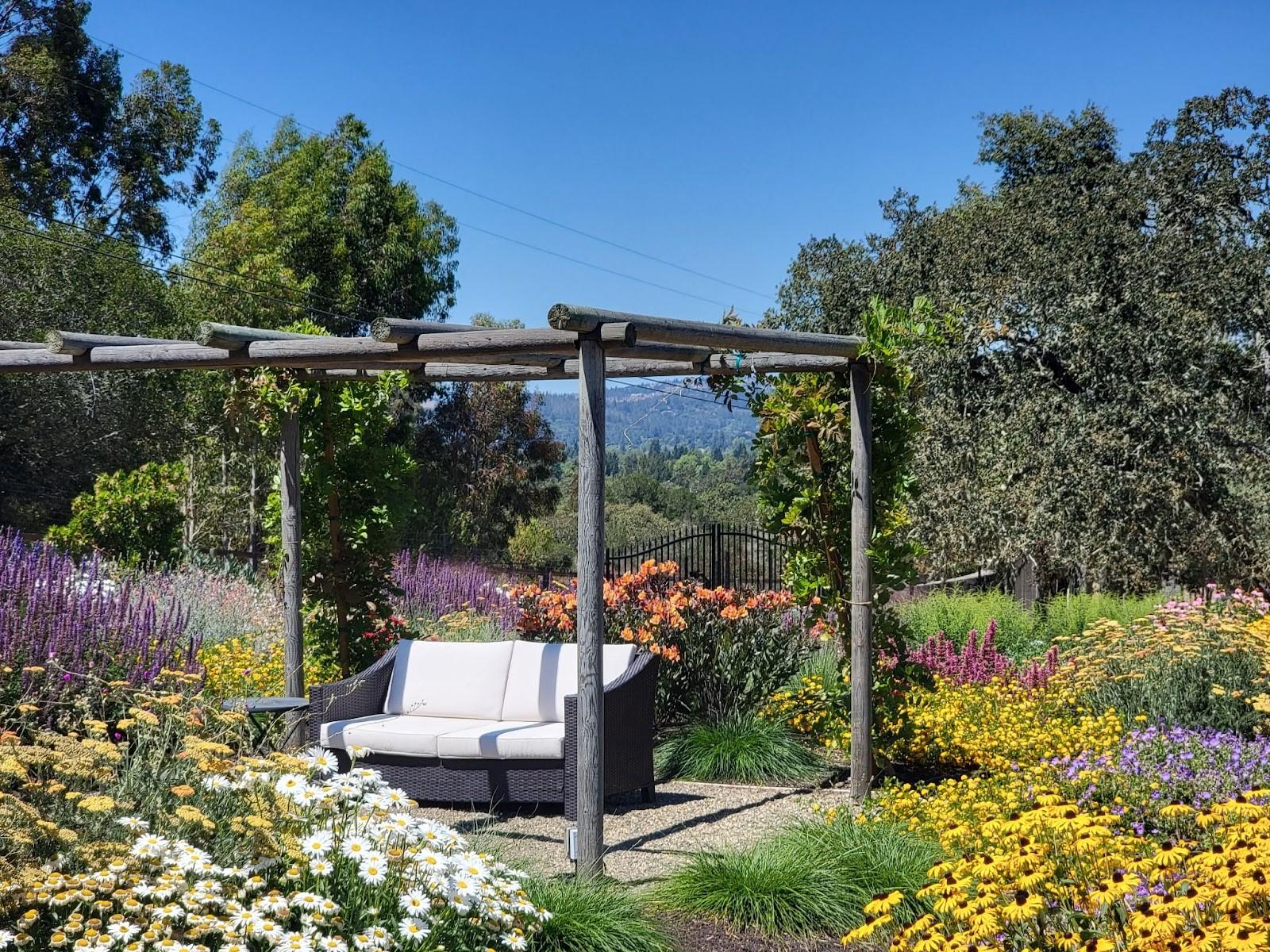
4 ways to incorporate sustainability into your landscape design
Sustainable landscape practices are becoming increasingly important as we face the challenges of climate change and environmental degradation. By selecting a landscape designer near you in Sonoma County to incorporate these practices into your garden design, you can create a beautiful garden that has positive ecological impacts and adds resilience to the environment you live in.
Here are 4 ways to advise a landscape designer to incorporate sustainable landscape practices in your garden design:
Choose native plants
Native plants are adapted to the local climate and conditions, so they require less water and fertilizer than non-native plants. They also provide food and shelter for local wildlife, which can help to boost biodiversity in your garden and help it become part of the larger ecosystem, rather than separate from it.
There are a wide range of native plants ranging from delicate flowers to robust shrubs and some of the largest trees on planet Earth, Redwoods! With so much to pick from it can be a daunting task, that’s why hiring a landscape design consultant in Sonoma County can be so helpful. Even within our native plant pallet, there are many helpful tips a designer can give you about the proper location in your garden for sun exposure, soil type, and flowering or non-flowering.
A sustainable landscape designer will also help you dive deeper into restorative and sustainable practices within your design such as how to balance pollen and nectar sources at the right time of year to maximize your ability to attract pollinators and beneficial insects to your landscape. Or which plants have the deepest roots and thrive in harsh conditions allowing them to hold a steep hillside from eroding.

Use water-saving irrigation methods
California lives through boom and bust periods with drought and water. Irrigation technology has made great advances in recent years to include WIFI-enabled weather-based irrigation controllers that use local weather data to adjust irrigation automatically for you! Electronic flow sensors can be installed on your irrigation system to automatically shut off the irrigation in case of a leak, and notify you if your water use has exceeded a set amount, something that can save you hundreds or thousands of dollars on water bills if a break occurs, especially at a second home or rental home!
Additionally, there are various types of ways to apply water to the landscape such as sprinklers, or drip tubing. However, what sprinkler nozzles or drip emitters are used can greatly impact their efficiency. You can take all the best steps to create a sustainable garden but without applying water efficiently you could easily lose plants due to over-watering.
Hiring a landscape irrigation specialist in Sonoma County who is capable of designing an irrigation system appropriate for your plants and location, but also has a deep understanding of the most modern and up-to-date irrigation technology is essential in the successful planning of a sustainable landscape.
Use compost as mulch throughout your landscape
Mulch helps to retain moisture in the soil, suppress weeds, and improve the overall health of your plants. In wild nature, plants will drop leaves and others will drop branches that decay, allowing organic matter to work back into the soil. In landscapes are that constantly kept clean this process isn’t able to happen. By adding organic mulches such as compost or bark, you are mimicking this process and greatly improving the soil food web on which your plants thrive.
Adding compost as mulch also helps trap carbon into the soil by returning organic matter into the soil food web. In Sonoma County, we have partnered with ‘Zero Waste Sonoma’ in their mission to encourage local residents to compost food and green waste. When this waste heads to the landfill it turns into Methane because it decomposed in an environment without oxygen. Methane is 25 times more potent than Carbon Dioxide in terms of its impact on climate change. Agencies like ‘Zero Waste Sonoma’ provide this compost to landscapers and farmers, and by utilizing these products we incentive participation in the program. This in turn creates a mutually beneficial system where we are able to divert massive amounts of carbon into local soils rather than being released as methane into the atmosphere as a result of its decomposition in a landfill.
With all this in mind it’s clear that using compost as mulch can have an outsized impact in your sustainable landscape, both for the soil food web and for the climate at large.

Create a wildlife habitat
Hiring a sustainable landscape designer near you will ensure your plant selections can benefit local wildlife. This includes picking native plants which can be food sources but also includes shelter and water sources for birds, insects, and animals alike.
Water sources can be as simple as a bird bath, or as extravagant as a waterfall and pond. However, supporting wildlife in your garden is done with ease, as a dish, birdbath, or simple fountain does the trick. Birds and pollinators of all sorts will be more inclined to spend time in your landscape as they have a place to rest.
However, hiring a landscape designer will help you navigate the details of maximizing the benefits of your sustainable landscape by designing a water feature that is placed and shaped strategically to be easily accessed by local wildlife. Considering where this location can be viewed from is also quite important, as part of the fun is getting to enjoy seeing your new visitors and beautiful birds and butterflies.
If you are looking for ways to improve your garden design, consider incorporating sustainable landscape practices and hiring a Sonoma County landscape contractor to build it for you. While the word sustainability is tossed around a lot these days, it’s important to make informed choices about how we steward our little slice of the earth, ensuring we make a positive impact on the environment around us.





